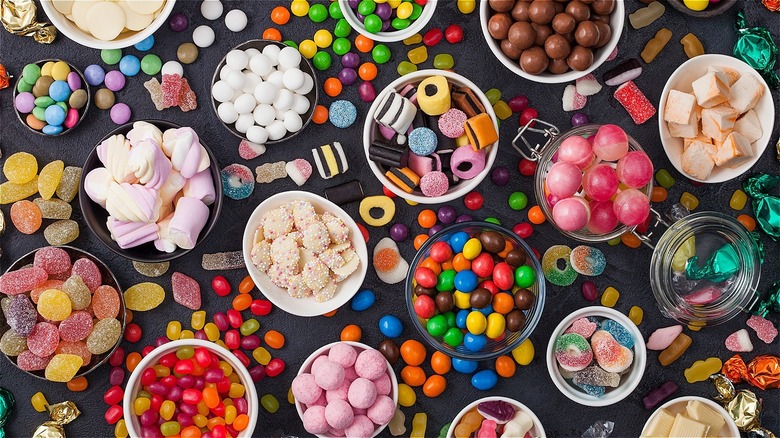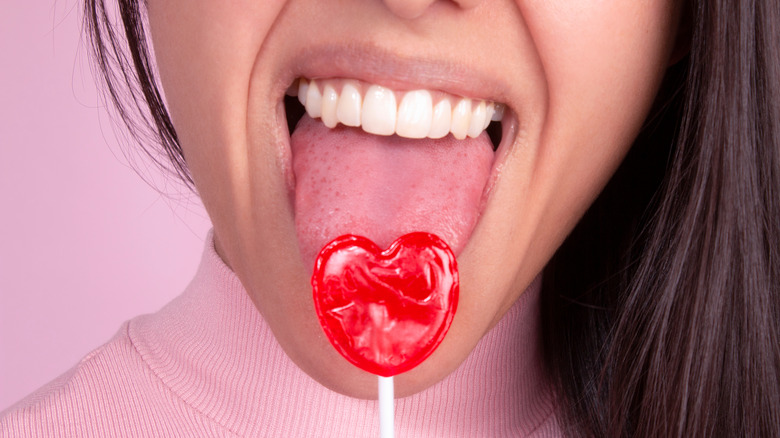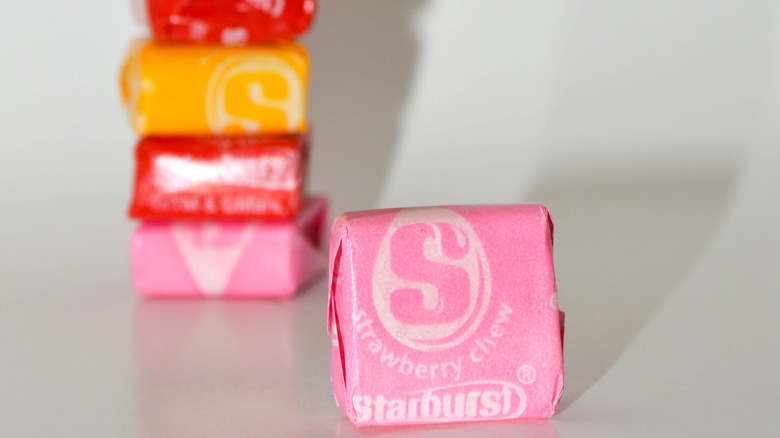Why You Can't Get Enough Of Pink And Red Candies, According To Science
When you take a handful of candy pieces from a bag, do you ever notice what colors you gravitated toward eating first? Do you swear the taste of the red Sour Patch Kids are better than their yellow counterparts? Or that for some reason the red M&M's hit the spot just a bit more than the blue ones? Or maybe you grab the pink Starbursts first without even thinking about the other colors. Turns out, you're not alone, and you're also not as in control of your flavor selections as you think you are.
Apparently, when it comes to choosing candies, our preferences are dictated by a combination of psychology and cultural conditioning. Per Charles Spence, PhD, a psychologist at the University of Oxford and the author of an article in Flavour that examines the connection between color and taste, the brain actually takes color into consideration when it deciphers how a certain food tastes. The color red, for example, sends the brain "sweet" signals, while green sends it "sour" signals (via Reader's Digest). Grub Street pointed out that reds might be considered less acidic than yellows.
We're conditioned to think red and pink foods taste sweeter
Studies have shown that simply adding red food coloring to an item makes it "taste" ten percent sweeter (via Reader's Digest). "It seems like red is a particularly effective cue for sweetness, maybe because there's a cue in nature, which is fruits going from green and sour and unripe through redder and sweeter and riper," Spence explained (via Slate).
Such red- and pink-biased sweet conditioning has been going on for a long time; in fact, adding red coloring to candies to make them more appealing to children is a practice that can be dated back to the early 1800s. Marcia Pelchat, PhD, another psychologist, pointed out the connection between conditioning and creating a cultural phenomenon, that is, if everyone decides red is the sweetest, over time, it will be considered the sweetest. "I think it's shared cultural experience. The more you eat the red lollipops, the more you associate the red lollipops with sugar and calories and the more you want the red ones. ... Once a tradition gets established in a cuisine or culture, you don't really need an explanation for it, it's just what's done," Pelchat said.
Companies are in the red – in a good way
Okay, so the psychology of it all may be interesting, but what's it all mean in the bigger picture? Dollars in the pockets of candy execs, that's what. In case you haven't been in the candy or ice cream aisles lately, many companies have started producing all-red and all-pink packages of their products. Starburst has pink line called All Pink, complete with a copyrighted motto — "You Are a Pink Starburst" — and a self-love affirming marketing strategy — you can even download the 30-day #DoYou calendar to accompany all your pink candy.
As for Popsicles, "red is a magical color," said Nick Soukas, the person in charge of ice cream at Unilever, the sugary ice pop's parent company, who added that feedback from customers in the form of phone calls and Tweets urged Unilever to produce and market a box of Popsicles with only one color pop: red. "We've gotten lots of thank yous," Soukas said (via Slate).


